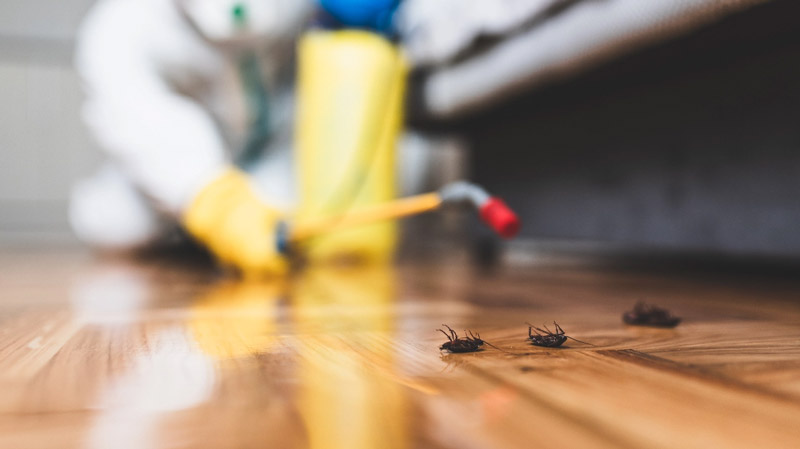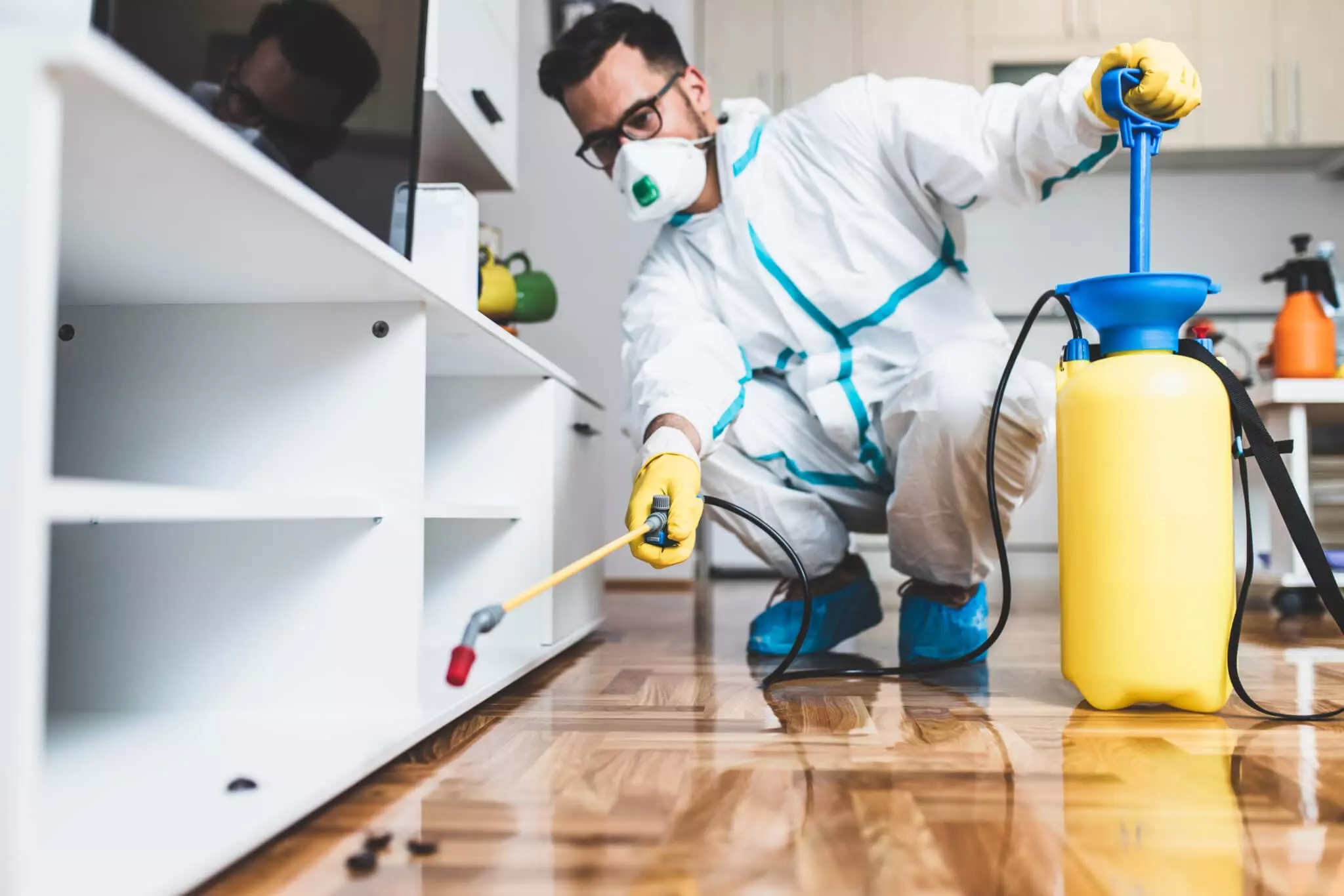End infestations before they spread with Pest Control extermination today.
Eco-Friendly Parasite Control Approaches for Managing Wild Animals in Urban Areas
Urban locations typically discover themselves at the crossway of human task and wildlife, bring about special challenges in pest administration. Green methods emphasize lasting coexistence, using techniques such as environment modification and all-natural repellents to mitigate human-wildlife conflicts. These methods not just secure the environment yet also enhance area involvement in wildlife administration. As metropolitan populaces remain to expand, recognizing the dynamics of wild animals communications comes to be significantly essential. What ingenious techniques can be carried out to make certain both eco-friendly equilibrium and city safety and security? Discovering this inquiry discloses a compelling landscape of potential solutions.
Comprehending Urban Wildlife Characteristics
Understanding Urban Wildlife Dynamics is crucial for establishing effective and environmentally friendly pest control methods. Urban areas are increasingly coming to be environments for numerous wild animals species, driven by variables such as environment fragmentation, food availability, and human advancement. Identifying these characteristics permits a nuanced strategy to pest administration that aligns with eco-friendly concepts.
Urban wildlife commonly includes varieties such as raccoons, squirrels, and birds, which adjust to city atmospheres, discovering niches in eco-friendly spaces, parks, and even houses. Their visibility can lead to conflicts with humans, specifically when they manipulate human sources for food and sanctuary. Understanding the behaviors and eco-friendly duties of these types informs approaches that decrease unfavorable interactions while advertising biodiversity.
In addition, acknowledging the interdependencies within urban communities helps in recognizing critical locations for habitat preservation and restoration. This understanding adds to the advancement of integrated bug administration (IPM) techniques that consider the ecological balance, therefore minimizing reliance on unsafe chemicals. By promoting conjunction in between human beings and city wildlife, cities can create healthier environments that benefit both locals and regional ecological communities, leading the method for sustainable urban living.
All-natural Repellents and Deterrents
Natural repellents and deterrents use a lasting choice to standard parasite control approaches by harnessing the power of nature to maintain undesirable types away. These green remedies typically make use of plant-based active ingredients, vital oils, and other naturally occurring materials that hinder bugs without hurting the setting.
One reliable all-natural repellent is peppermint oil, which is understood to ward off rodents and pests. Its solid aroma is undesirable to lots of insects, making it a popular selection for metropolitan setups. Vinegar and citrus peels can serve as deterrents, as their solid smells are generally unappealing to different wildlife.
In addition, diatomaceous earth is a natural powder that can be spread out in areas susceptible to insect activity, properly dehydrating and hindering bugs without positioning threats to non-target types. In addition, garlic sprays and neem oil are identified for their ability to ward off a variety of pests, including both pests and bigger wild animals.
Applying these all-natural repellents not only lowers reliance on chemical pesticides but additionally promotes a much healthier city ecological community, fostering a much more well balanced conjunction between human beings and wild animals. By making use of these techniques, metropolitan areas can properly handle parasite populations while reducing ecological influence.
Habitat Alteration Strategies
Effective environment alteration strategies play a crucial function in sustainable bug monitoring by altering the atmosphere to make it much less for pest invasions. By comprehending the environmental dynamics of metropolitan locations, residential property proprietors can implement tactical adjustments that prevent bugs while advertising biodiversity.
(Mosquito Treatment)One main strategy involves preserving correct sanitation. This includes regular waste elimination, protecting garbage containers, and eliminating standing water to minimize reproducing websites for insects Continued and rats. In addition, landscaping practices such as choosing indigenous plants can boost ecological equilibrium, giving habitats for helpful microorganisms while reducing sources for parasites.
Another important approach is to secure access factors in structures. Evaluating and fixing fractures in structures, walls, and windows can significantly reduce pest access. Furthermore, creating physical obstacles, such as fences or plant buffers, can hinder wild animals activity right into human-inhabited locations.
Integrated Insect Management Practices
Structure upon environment alteration strategies, integrated pest monitoring (IPM) techniques supply a holistic method to managing parasite populations while reducing ecological influence. IPM incorporates various approaches, including biological, cultural, mechanical, and chemical controls, to accomplish reliable bug monitoring.
Biological control involves the intro of natural predators or parasites to reduce parasite populations. Social practices, such as plant turning and cleanliness, interrupt pest life process and lessen their habitats - Pest control service. Mechanical controls, like traps and obstacles, provide instant remedy for parasite pressures without chemical intervention
Chemical controls are utilized as a last resource, concentrating on targeted applications that limit damage to non-target types and the atmosphere. The choice of ecologically friendly pesticides, when essential, is indispensable to the IPM structure. Furthermore, checking pest populaces and examining possible damages helps inform decision-making, ensuring that treatments are prompt and efficient.
Neighborhood Participation and Education And Learning

(Earwig control Port Charlotte)Workshops and informative sessions can equip locals with expertise concerning native types, environment preservation, and effective non-toxic bug management techniques. Partnership with colleges, neighborhood companies, and federal government agencies better improves educational outreach, ensuring that important details reaches diverse target markets.
Moreover, community-led initiatives, such as community clean-up days and environment restoration projects, not only promote biodiversity yet also enhance neighborhood connections. Pest control service. By motivating homeowners to share their experiences and monitorings, neighborhoods can create targeted techniques that attend to certain neighborhood parasite concerns
Incorporating feedback from residents into insect administration prepares enables a more responsive and adaptive approach to wildlife challenges. Ultimately, informed and involved areas are crucial to accomplishing long-lasting success in environment-friendly bug control, bring about much healthier metropolitan atmospheres that respect both human and environmental needs.

Conclusion
Finally, green bug control approaches offer sustainable remedies for handling city wildlife. By focusing on environment alteration, making use of natural repellents, and applying integrated bug management methods, areas can promote an unified coexistence with neighborhood fauna. Involving residents via education and learning improves recognition and urges responsible wild animals communications. Ultimately, these approaches not only shield biodiversity but likewise advertise environmental health and wellness, ensuring urban areas continue to be dynamic ecological communities where human beings and wildlife prosper together.